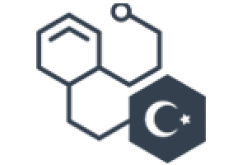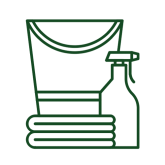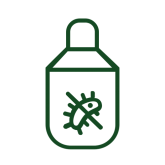KKDIK EXPOSURE SCENARIO
What is an Exposure Scenario?
Exposure scenario (ES) can be defined as the measures determined to control and, if possible, minimise the negative effects on the environment and the situations that may occur as a result of the exposure of individuals to this chemical during the use and production of a chemical.
The exposure scenario should include all relevant exposure routes and all populations that may be exposed. These scenarios are prepared according to the results of a risk assessment based on DNEL and PNEC values, taking into account many parameters such as where the substance is used, how it is used, by whom (industrial worker, professional worker, end consumer), in what quantities. In addition, these scenarios include chemical exposure controls and recommendations made to the user regarding these controls, operational conditions (OC) and risk management measures (RMM).
What is an Exposure Assessment and how is it Prepared?
An exposure assessment is a set of data describing in detail the uses and conditions of use of a chemical.
The first step in the preparation of an exposure assessment is to describe how, where and in what manner the chemical is generally used throughout the supply chain. The second step is to estimate these other exposure pathways if there are other exposure pathways than the various conditions of use described in the exposure scenario.
It is important that the exposure estimated and generated in both steps is included in the exposure scenario and corresponds to the defined operational conditions and risk management measures.
Who can Prepare an Exposure Scenario?
A Chemical Assessment Expert (CAE) is a person who has received a compulsory face-to-face 64-hour training programme prepared in accordance with Annex-18 of the KKDIK Regulation No. 30105 (Repeated) from an institution approved by the Ministry of Environment, Urbanisation and Climate Change and who is entitled to receive a certificate.
A chemical assessment expert must prepare a chemical safety assessment with exposure assessment information for each chemical classified as hazardous according to the SEA Regulation No. 28848 with an annual tonnage of 10 tonnes or more to be registered. According to these assessments, the registrants create exposure scenarios for the substance according to the areas of use of the chemical. These exposure scenarios are then communicated to downstream users. If the supplier does not provide an exposure scenario, the downstream user can develop their own exposure scenario.
Who is Required to Prepare an Exposure Scenario?
Within the scope of the KKDİK Regulation, every chemical classified as hazardous with an annual amount of 10 tonnes or more per registered substance must have an exposure scenario. These exposure scenarios must also be described in the Chemical Safety Report (CSR).
Is there a format for an Exposure Scenario?
There is no definition for the exposure scenario format in the KKDIK Regulation. This causes confusion among the suppliers involved in the substance register. However, ECHA (European Chemicals Agency) has done some work to harmonise the layout for these scenarios and the expressions used in the content for everyone. As a result of these studies, they have created a format consisting of four headings as follows:
• Title section
• Conditions of use affecting exposure
• Exposure estimation
• Guidance issued for assessing whether the use of downstream users is included in the exposure scenario
Also, "Section D: Creating an Exposure Scenario" in the KKDIK guidance can be used.
Who should be Notified of Exposure Scenarios?
Exposure scenarios described in the CSRs are communicated to downstream users. The area of use of each downstream user included in the register must be specified in the exposure scenarios.
Downstream users also have duties to fulfil in the development of a chemical safety assessment. Downstream users are obliged to obtain standardised short titles of exposure scenarios for the relevant uses of sub-substances in their industry, rather than various scenarios from different suppliers, and to indicate these scenarios to the company that will cover them from the register. This issue is explained in Article-33 of the KKDİK Regulation No. 30105 (Repeated).
What are the duties of Downstream Users when Preparing an Exposure Scenario?
Exposure scenarios are the responsibility of the supplier who will register under KKDIK. In these scenarios, the supplier has to cover all the areas of use of the downstream user in order to avoid any problems in imports. It transfers this information upwards in the supply chain to the next actor or distributor.
Downstream users receiving the exposure scenario can prepare an exposure scenario for the defined uses or pass the information to the next actor up the supply chain. However, the downstream user also needs to check the use cases covered by the register against their own use cases.
• If the use case is covered by the register, it is checked whether the conditions specified in the scenarios are complied with.
• If the use is not covered by the register, the supplier is contacted to add the use.
If new information on the hazardousness of the registered substance is obtained, it should also be checked whether the risk management measures included in the exposure scenarios notified by the supplier to downstream users are appropriate.















